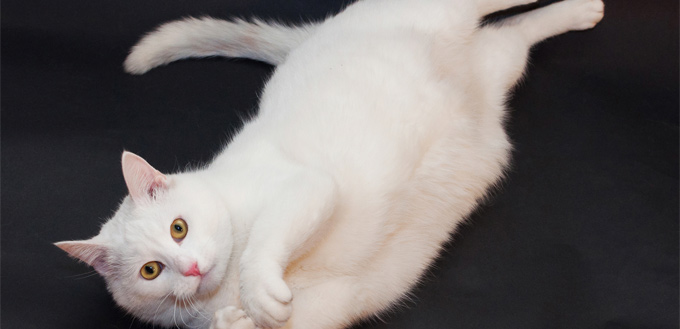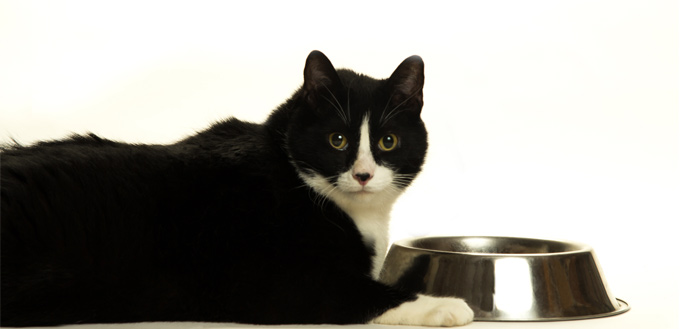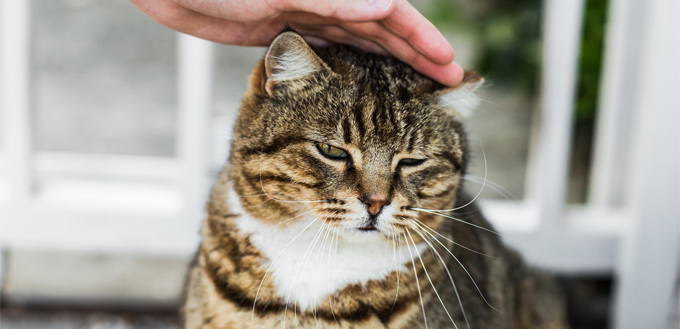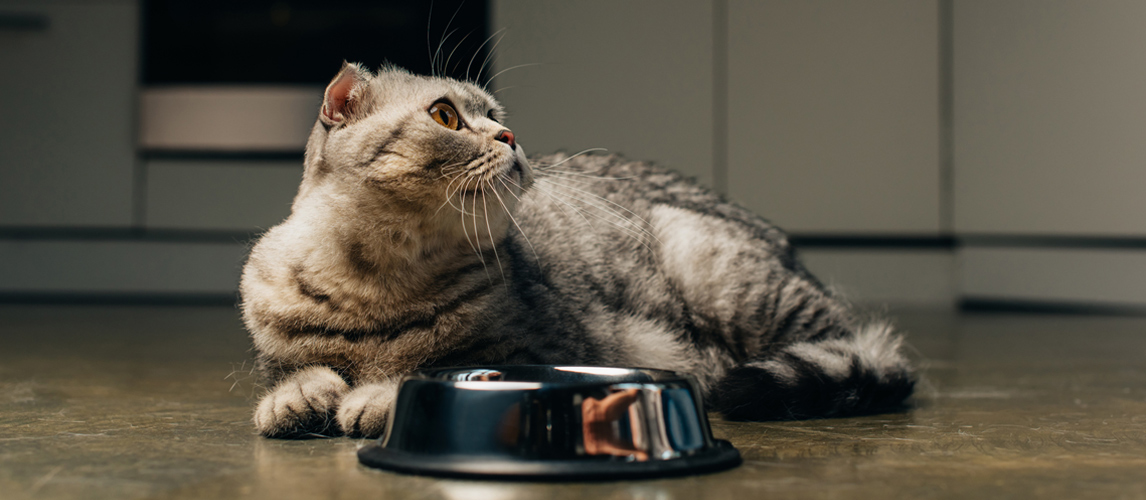If you speak to any vet, they will likely tell you that they are seeing an increasing number of obese and overweight cats for a number of different disorders. This is because overweight cats actually outnumber cats of a normal weight. With that being said, in this blog post, we are going to take a look at obesity in cats in further detail. We will explain how to tell whether or not your cat is overweight, as well as giving you some advice on how to put your cat on a diet. With that being said, continue reading to find out everything you need to know.
How To Tell If Your Cat Is Overweight
Obesity occurs when a cat consumes more calories than are needed to fulfill their daily energy needs. How many calories your cat needs to consume will depend on the size of it. Of course, weighing your cat and finding out whether it is the right size in relation to the average weight for that breed is a good place to start. For an average domestic shorthair cat, you should expect it to weigh between eight and 10 pounds. However, there are some other indications that your cat is overweight. This includes the following:
- You cannot feel the outline of your cat’s ribs if you gently run your fingertips against the direction of the coat
- You cannot feel the indentation of the waist if you smooth the coat flat, running your hands along your cat’s sides
- Your cat has a flabby belly
- Your cat has movement or health problems
Related Post: Best Cat Food for Weight Loss

Obesity Risks
There are a number of different risks associated with obesity in cats. This includes the following:
- Overweight cats could have a decreased immune function, a possible increased chance of some cancers, flatulence, and increased risk of constipation, and a heightened risk of skin fold pyodermas.
- Overweight cats are a higher surgical risk. This is because of the impact that obesity can have on the lung and heart function. Anesthetic drugs, for example, could not be metabolized properly because of compromised kidney or liver function. This could increase the risk for an anesthetic drug overdose. Moreover, the surgeon may find it difficult to reach the surgical target because of thick layers of fat.
- Overweight cats are at a higher risk for urinary tract disease.
- Obesity can predispose cats to hepatic lipidosis, which is a potentially fatal disease.
- Fat in the abdomen and chest can restrict the lungs’ ability to expand, which makes it hard for the cat to breathe.
- Obesity in cats can lead to diabetes mellitus, which occurs because the body’s ability to use or produce insulin is exceeded by the body’s need for it. If your cat is suffering from diabetes, you may consider getting them food for diabetic cats.
- Overweight cats can also place an extra burden on their heart by developing high blood pressure. This means the heart needs to work harder in order to pump blood to all of the extra body tissue.
- Increased weight can place an excess burden on ligament, tendons, and joints, which can lead to arthritic changes in some cases. Jumping down from a high place can be especially hard on your cat’s joints.
- Overweight cats might not live for as long as they would of if they had a healthy weight.
Basic Tips To Help You Slim Down Your Cat
Before we delve deeper into how you can put your cat on a diet, let’s take a look at some basic slimming down tips and tricks you can use:
- Do not allow your cat access to dog food.
- Do not share human food with your cat. Not only is it fattening but it can lead to diarrhoea too.
- Avoid giving your cat treats.
- Set a weight loss goal with your vet.
- Leave out cat food for a limited amount of time.
- Keep your cat’s water bowl full.
- Measure out the food your cat eats. Divide the targeted calorie intake for your cat into four to six small meals.

How To Put Your Cat On A Diet
Now you understand why it is so important to combat obesity in cats, let’s take a look at the different ways you can put your cat on a diet…
- Work with your vet – There is only one place to begin, and this is with working alongside your veterinarian. It is extremely important that you consult a specialist when dealing with weight-management problems, especially if your cat is considerably overweight. Your vet will help you to choose the right feed amounts and the best cat food for weight loss. After all, what works for one cat is not necessarily going to be the best choice for another. The vet will also be able to monitor your cat’s weight loss to make sure the diet that has been chosen is effective. They can make tweaks and changes as and when necessary.
- Feed your cat the right amount – One of the biggest mistakes pet owners make is free feeding. This is not helpful when it comes to weight loss in cats or any other type of pet for that matter. You will be able to keep track of how many calories your feline friend is consuming if you measure meals. Of course, figuring out exactly how much food your cat should have can be difficult. This is because calorie requirements differ based on the individual cat, as well as their age and lifestyle. Calories are not always clearly labeled either, which is why you need to be savvy while you are shopping. Do not merely assume that cat food of a similar nature is going to have around the same number of calories.
- Select the right diet cat food – As mentioned earlier, this is something your vet will be able to assist with. Nevertheless, you still need to know what you should be looking for while shopping for healthy food for your cat. You need to look for food that is moderate to low in calories while being high in proteins. Cats need meat, and they need a good quantity of it. This is because they are obligate carnivores. A lot of diet foods contain a high amount of carbs, which are not ideal for feline weight loss. Moreover, a lot of the canned foods available will have fewer carbs and more proteins than dry cat food. Nevertheless, this does not mean you cannot find low-carb, high-protein dry foods. It is all about being savvy with your selections.
- Remember, a feeding guide is just that – When you buy food for your cat, it is likely that it will come with recommendations regarding how much your cat should eat. However, it is important to remember that every cat is different and these feeding guides are exactly that – a very rough guide. Plus, feeding guides are targeted at cats that are already a healthy weight. They are not designed to assist with weight loss.
- Put the treats on hold for a while – You know what they say – you have to be cruel to be kind. Yes, you may feel bad that your cat no longer gets treats but you are doing it for the good of their health. Commercial cat treats are low in nutrition and high in calories, which means they are of no use whatsoever when your cat is trying to lose weight. Why not see if you can substitute the treats you usually give for something more nutritious?
- Aim for slow weight loss – Aside from the points that have already been mentioned, it is important that you do not expect your cat to lose a lot of weight at a quick pace. Your cat could become very sick if he or she loses weight too fast. Weight loss needs to be steady and it needs to be slow, with regular reassessments by the vet team to make sure your cat is not losing muscle. Your cat should not lose more than two percent weight per week.

No Crash Diets
One thing you should never do is try to put your cat on a crash diet. In an attempt to make your cat lose weight, you may ration their food dramatically. However, this can lead to serious health problems, and so you should never do this. You will deny your cat of the correct balance of essential vitamins and minerals if you reduce your cat’s food intake by more than 10 to 15 percent, and this could lead to hepatic lipidosis and other potentially dangerous problems. For those who are unaware, hepatic lipidosis is a severe liver condition, which can sometimes be fatal, and it can be caused due to food restriction.
Getting Your Cat Active
It is important to recognize that food is only part of the puzzle when it comes to combating the obesity issue your cat is facing. The lifestyle your cat leads will also have a massive impact on how much it weighs – just as is the case with humans. Particularly, a lack of exercise can be a real problem. There are a number of different steps you can take to encourage your cat to be more active:
- When feeding your cat, you could put a part of their daily food allowance into a special feeding ball. This means they will need to exercise and get moving in order to access their food. You could also put their food on top of a climbing tower or at the top of the stairs to keep your cat moving.
- If your cat is kept indoors on an exclusive basis, you should think about allowing your cat to go outside. You may want to build a pen or fence your garden to make sure that your cat is secure.
- Scratching and climbing towers encourage exercise and make your cat’s environment a lot more interesting too.
- Use a ‘fishing’ toy or encourage your cat to chase a ball when playing. A dedicated playtime can make a big difference.
Related Post: Best Cat Scratching Towers
What If The Diet Does Not Work?
If you have put your cat on a diet, following the tips provided above, and your cat is not losing weight, the most likely reason for this is because your cat is still probably consuming too much. If you are confident this is not the case, though, and you are at a loss regarding what to do next, the best thing to do is book an appointment with the vet.
Should You Give Your Cat Supplements Like Minerals And Vitamins?
The short answer to this question is no. This is because good cat food has all of the minerals and vitamins your cat requires. You should never use supplements unless your vet has directed you to do so.
All in all, there is no denying that it is important to take action if your cat is overweight. The last thing you want is for your cat to suffer from a serious disease or any type of condition because he or she is overweight. While there is no denying that putting your cat on a diet will require a bit of effort on your behalf, it is well worth it in the end if it protects your cat’s health.
Sources:
- Julie Edgar, Overweight Cats: Diets and Associated Health Risks, Pets WebMD
- Mori, N, Lipotoxicity Observed At The Early Phase Of Obesity In Cats Fed On High-fat Diet, CAB International
- Elizabeth Rowe, Risk Factors Identified For Owner-reported Feline Obesity At Around One Year Of Age: Dry Diet And Indoor Lifestyle, ScienceDirect
Note: The advice provided in this post is intended for informational purposes and does not constitute medical advice regarding pets. For an accurate diagnosis of your pet's condition, please make an appointment with your vet.






